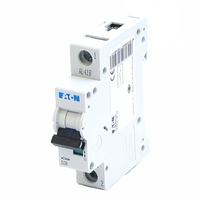Hello.
I am going to replace my old fuse box (fuse box) with the so-called "eski". I live in a block of flats from the 70's. I have already bought a box, type B circuit breakers (2x10A, 2x16A and 2x20A) and a comb. From what I've been saying, there is a rule that the tension always comes from the bottom. But according to the diagram on the switches and its markings, it should go from the top (to terminals No. 1 - see photo
 )
)
The switches have the designation CSL6-B ... A.
Do you think I can connect them from the bottom? or should they be connected at the top?
I am asking because I have not yet seen the comb distributing the power supply to the switches from the top.
I am going to replace my old fuse box (fuse box) with the so-called "eski". I live in a block of flats from the 70's. I have already bought a box, type B circuit breakers (2x10A, 2x16A and 2x20A) and a comb. From what I've been saying, there is a rule that the tension always comes from the bottom. But according to the diagram on the switches and its markings, it should go from the top (to terminals No. 1 - see photo
 )
)The switches have the designation CSL6-B ... A.
Do you think I can connect them from the bottom? or should they be connected at the top?
I am asking because I have not yet seen the comb distributing the power supply to the switches from the top.


